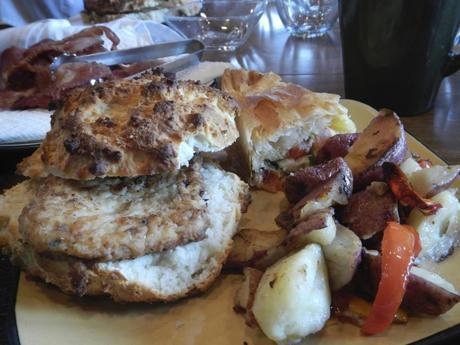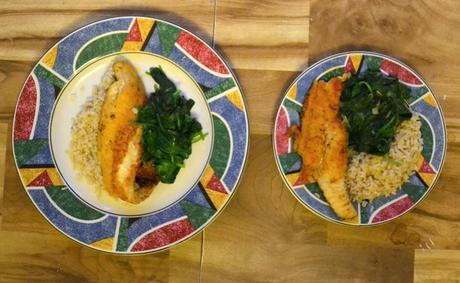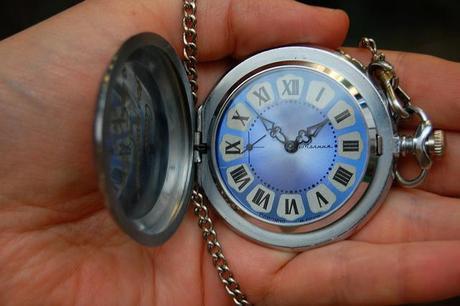Reducing your portion sizes can very quickly cut down on how much food (and how many calories) you are consuming each time you eat. Learning proper portion control by reducing portion sizes is one of the critical keys for losing weight and maintaining long-term health and fitness. Many of us Americans don’t really realize it, but because of food advertising and restaurants, our portion sizes have gotten out of control. On top of that, we are eating mostly processed foods that are high in calories and digested very quickly. That means we are also eating more often and adding to the problem. With these 5 tips for reducing portion sizes, you can reverse part of that trend and take another step on the road to fit.

This is not a normal portion size!
Portion it out Before you’re Hungry
Food packaging has increased dramatically in size over the years. In fact, the number of larger sizes of foods available at a grocery store has in creased 10-fold since 1970. There are a couple of reasons for this, but the biggest is the perception that larger packages are a better value for us. In order to help combat this issue you have two options; spend a bit more and purchase single serve packages of foods or spend some time on grocery day splitting up your foods into reasonable portion sizes. Lauren and I use a combination of cheap, reusable zip lock bags and containers to do this. For example, when you go to the store and buy a package of chicken breasts divide it into 8-12 oz portions (enough for two of us) and freeze them in separate bags. Doing this helps us start out with the right portions before we cook our meals, preventing us from serving ourselves too much food later. We do the same thing with our snacks when we travel and road trip. We’ll take a snack and divide it into the number of portions listed on the back to keep from mindlessly eating too much in the car.
It all Begins with your Plate
There have been many studies directly linking the size of your plate to how much you eat. We’ve programmed ourselves to always clean our plates despite the fact that our plates have been getting larger. In one study it was revealed that, on average, the plates we use at home are 36% larger than they were in 1960. This means that every time you are cleaning your plate (no matter what’s on it) you are eating more than the average American ate in the ’60′s. Here’s a simple fix that’ll help you and your brain feel fuller and more satisfied after each meal. Serve your meals on smaller plates! It’s a really simple trick that will help you serve yourself less (don’t go back for seconds) and still give your brain the satisfaction of finishing everything in front of you.

source
Smal Bites = Small Waist
The next tip can seem kind of silly on the surface, but I’ve tried it and it really seems to work for me. Before you start eating your food, take the time to cut it up into bite sized portions and spread it out on your plate. When I say bite sized I mean smaller than you typically would cut your food. Then make sure that you aren’t stuffing 5 of those small bites into your mouth at once

Take Your Time

source
Make sure you are taking your time while you eat. This will help you in reducing your portion sizes by allowing your brain enough time to register that you are full. There is a complex relationship between your brain and stomach and how each determines that they are satisfied, but allowing ample time for your body to process everything is key. As cited in this Harvard Study, eating slowly helps as one of the weapons in your arsenal against obesity. When combined with portion control techniques, it can really help you to feel satisfied when eating smaller plates of food. If you find that you are finishing meals lightning fast and are still hungry, try timing yourself. The first time I did that I was shocked that I could pound down a plate of food in under 5 minutes. It’s no wonder I was still hungry! Try to stretch your meal to 20 minutes from start to finish, you’ll feel more satisfied and you’ll have more time to enjoy it.
Water is ALWAYS your Friend
This last tip seems to pop up everywhere in weight-loss guides, but it’s important enough to bear repeating: Drink lot’s of water throughout the day. I’ll give you a couple different reasons and how it realtes to portion control. If you drink a glass about 15 minutes before you eat, it’ll help fill you up because it’ll take up space in your stomach. If you also make sure to hydrate throughout the day it will also help reduce your cravings and make you less hungry when you do sit down to eat. Why? Studies have shown that 37% of people have such a weak thirst response that they confuse being thirsty for being hungry (more here). Not sure which one you are feeling? Drink an 8-ounce glass of water, wait 20-minutes, and then see if you are hungry. If so, then have a meal or snack. We keep reusable water bottles on us at all times in the car to make sure we are hydrating on long drives and throughout the day. More drinking, less snacking.
Losing weight and living a healthy lifestyle aren’t easy changes to make. The older you are the longer it’s going to take to learn new healthy habits. These tips will help train you and your body to stop and think about how much food you are putting into your body at each meal and help you ultimately reduce your portion size. If you found this article helpful, subscribe via email, to get more healthy and fit tips in your inbox.
